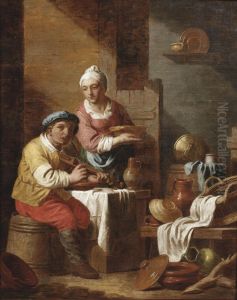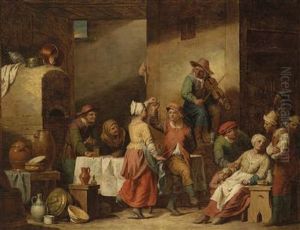Jan Joseph Verhaghen Paintings
Jan Josephszoon Verhaghen was a Flemish painter known primarily for his work during the Rococo period. Born on January 9, 1728, in Aarschot, which was then part of the Austrian Netherlands, Verhaghen grew up in a time of political and artistic transition. His early life and training are not well-documented, but he is thought to have received his initial art education in the Southern Netherlands.
Verhaghen's work is characterized by its grandeur and adherence to the Rococo style, which was popular in Europe during the 18th century. This style is marked by ornate and highly decorative elements, asymmetry, and playful themes. However, Verhaghen's oeuvre also demonstrates a shift towards the neoclassical style later in his career, reflecting the changing tastes of the period.
He was particularly known for his religious paintings and grandiose altarpieces. His style evolved over time, showcasing his ability to adapt to the prevailing artistic trends. Verhaghen's work was well-received, and he enjoyed the patronage of various churches and religious institutions. Despite his success, there is limited information available about his personal life or the full extent of his career.
Jan Joseph Verhaghen passed away on April 13, 1811, in Leuven. His contributions to the Flemish art tradition are part of the rich tapestry of European art history, and his works continue to be studied and appreciated for their historical and aesthetic value.

